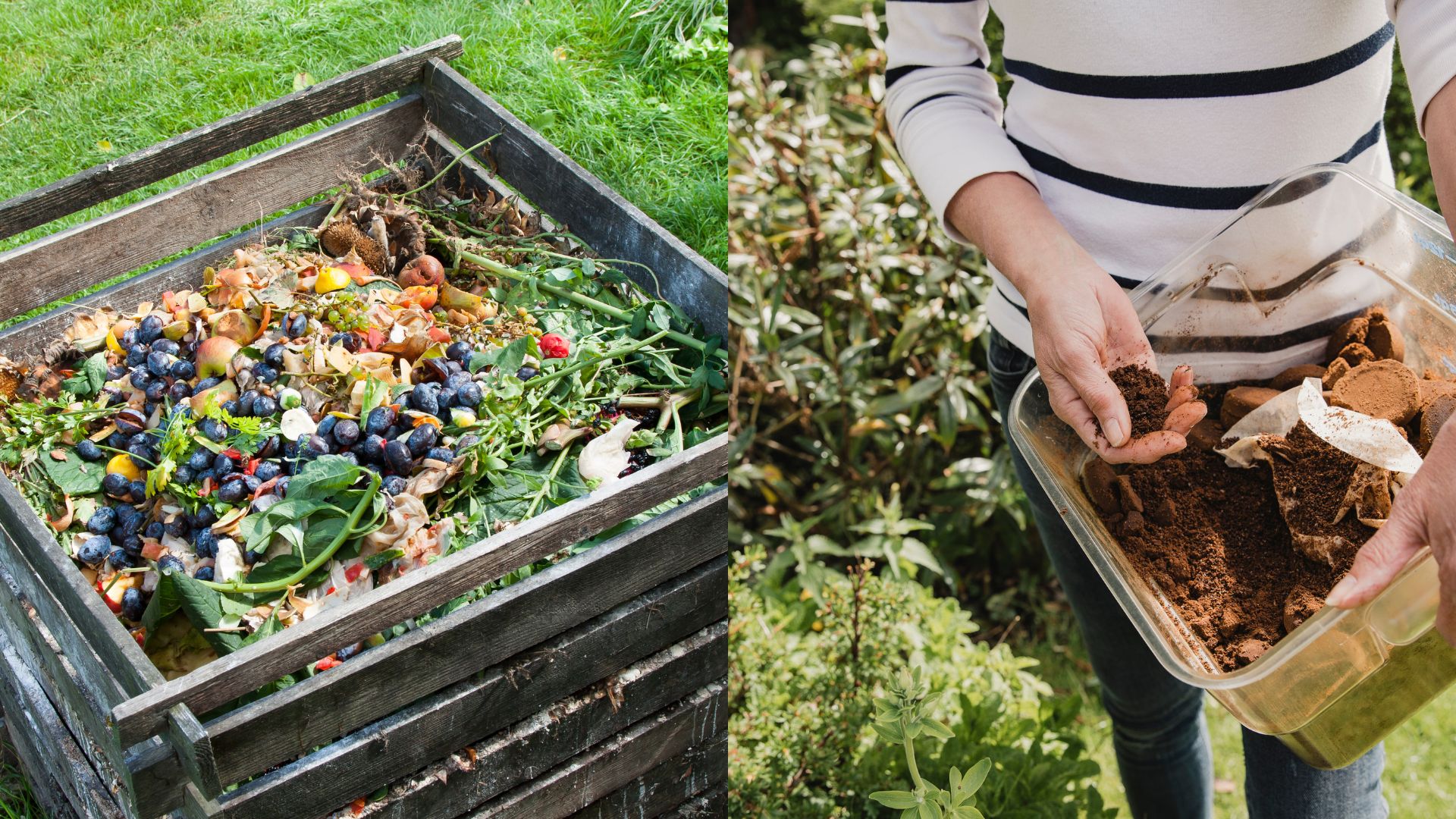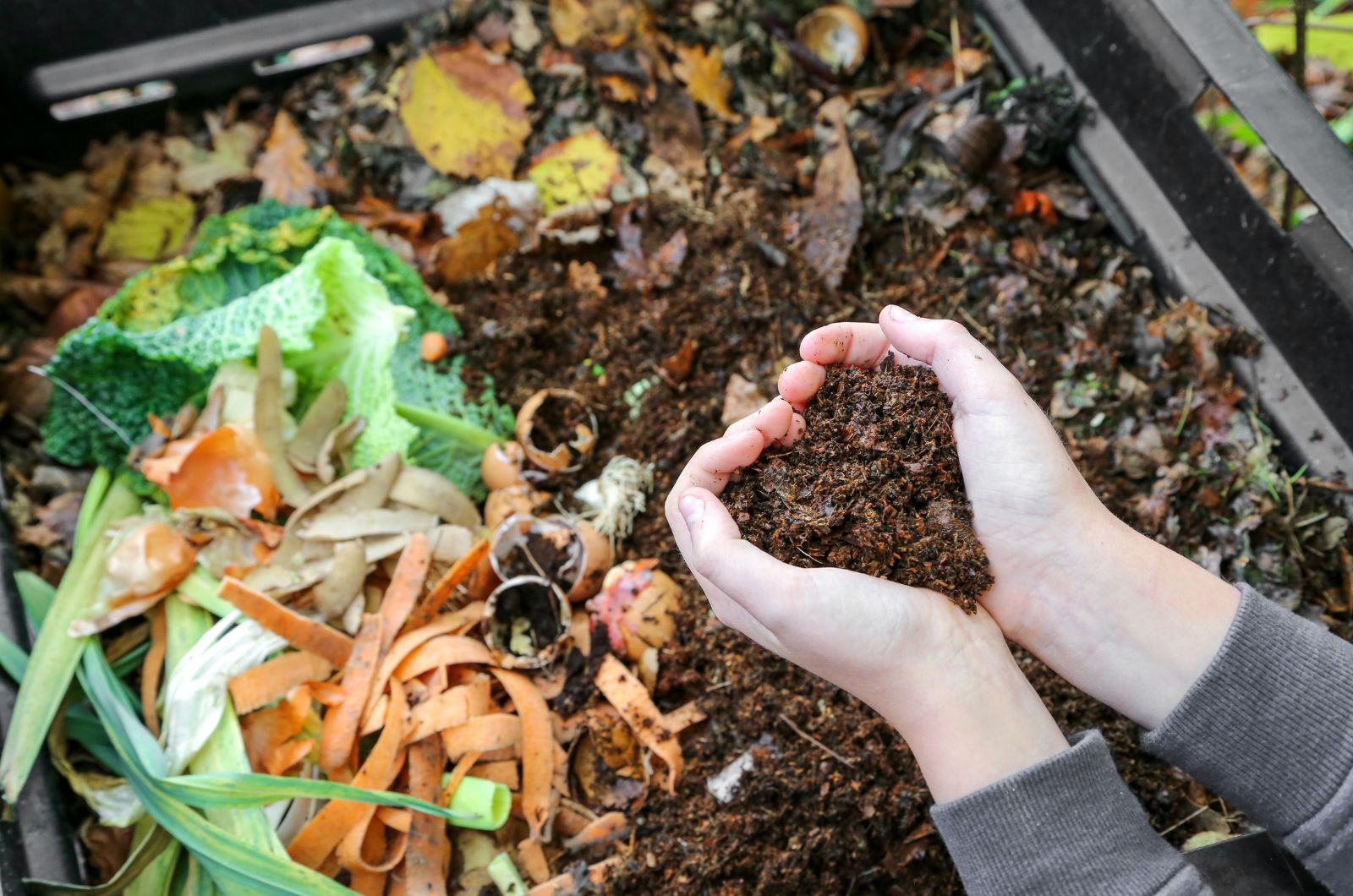Did you know that you can save money, protect the environment, and help your plants all in one go?
Composting is not a thing of the past. It allows you to reduce the amount of waste you send to the landfill and turn it into black gold you can use to feed your plants instead of spending hundreds of dollars on synthetic fertilizers.
But how to make it? Can you really add everything to it? What if I have a small space? These are the questions we’ll tackle in the following sections.
Let’s get started!
Benefits Of Composting To The Environment
About 119 million pounds of food is wasted every year in the US and sent to landfills. (1)
And recycling food is better than throwing it away because it reduces the emission of greenhouse gasses that occur when food rots in landfills.
Composting allows each household to reduce the amount of food and garden waste they send to landfills and turn it into something they can use.
Plants love this type of material because it is packed with nutrients they need for healthy growth. Compost also improves soil health as it nurtures beneficial microbes and enhances aeration and moisture-retention.
Finally, composting food and garden waste instead of throwing it away and letting it rot can reduce carbon-dioxide emissions by more than 50%. (2)
How To Start Composting
The key question to ask yourself before starting this process is “How long does it take to make compost?” And that’s because composting can take anywhere from a couple of weeks to several months, so you’ll need to devote your time to it.
Then, decide whether you want a composting pile or bin. Piles are much cheaper as you don’t need to buy anything for them, but bins can keep the compost in one space and even prevent the smell from spreading if you cover it.
After that, choose a level place for your compost heap or bin. If possible, find a location that will protect your bin from extreme weather.
The next step is layering green and brown materials. There are many different ratios you can follow, but the easiest one is to use green (kitchen scraps, clippings) and brown (twigs, leaves, branches, cardboard) materials in equal amounts.
Beneficial bacteria and microorganisms will break down the organic matter into compost over the next several months or weeks if the compost gets really hot.
Keep it damp and turn it diligently to let in air and prevent rotting.
Here’s are some tips to make compost:
What Not To Add To Compost
There are many things you can compost, such as fruit and vegetable peels, garden waste, cardboard boxes (without plastic), etc.
However, you should avoid adding the following materials because they can rot and infect the entire compost or attract various scavengers, from flies to racoons.
Don’t add:
• Meat and dairy
• Cooked food
• Cat and dog poop
• Infected plants and soil
• Hardy weeds (bindweed, elder)
• Grass clippings and weeds treated with herbicides
• Glossy paper
Tips For Composting In A Small Space
The good thing about composting is that you don’t need a whole lot of space to do it. You can get a small compost bin and place it in an outdoor garden.
And if you don’t have enough space outside for a real garden, you can always get an indoor composting bin or a bokashi bin to transform food waste into black gold.
Or you can turn to worm composting in a small bucket or plastic container.
Here are some tips for vermicomposting indoors:
How To Use The End Product
You know your compost is ready to use once it starts resembling fresh, loose soil.
Spread it on top of your garden beds in fall to prepare it for next year’s plantings. Mix it with your potting soil and use it for container and indoor plants.
Dilute it in water and use the compost tea for a quick nutrient boost or simply use it instead of fertilizer.
Store-Bought Alternatives
If you’re not ready to start your own composting journey or your compost isn’t ready yet, you can use high quality store-bought compost.
However, not all compost is 100% eco-friendly even if they claim so. If the bag doesn’t state otherwise, compost inside it contains peat – material harvested from peat lands which don’t grow that fast, making it unsustainable.
Harvesting peat also releases plenty of greenhouse gasses, harming the environment that way. (3)
Therefore, look for peat-free compost options when getting black gold for your garden.
It’s easy to get enough nutrients and enhance soil health without peat and save some money along the way because you won’t have to buy new topsoil the following year.
Finally, once you find the compost you like, look for additional information, such as whether it is suitable for your plants and how to use it.
Compost Bins
References:
1. Food Waste and Food Rescue (n.d.) Feeding America.
2. Talt, G. (2020). The ComPOSTer: How much can Composting Help in Solving the Climate Challenge? [UPDATED]. S.C.R.A.P. Lab, Sustainable Composting Research at Princeton.3. Pokorny, K. (2022). Harvesting Peat Moss Contributes to Climate Change, Oregon State Scientist Says. OSU Extension Service.


